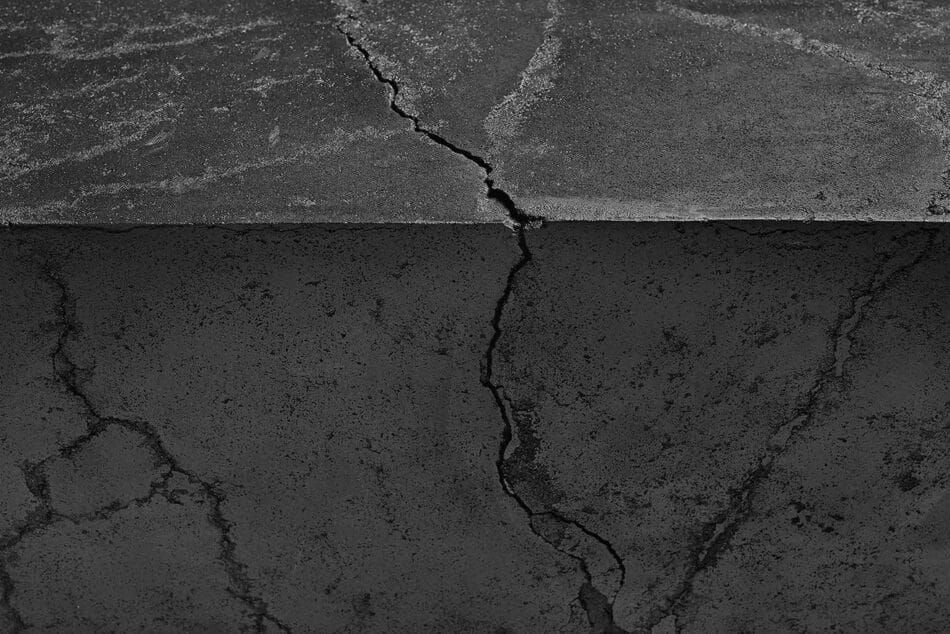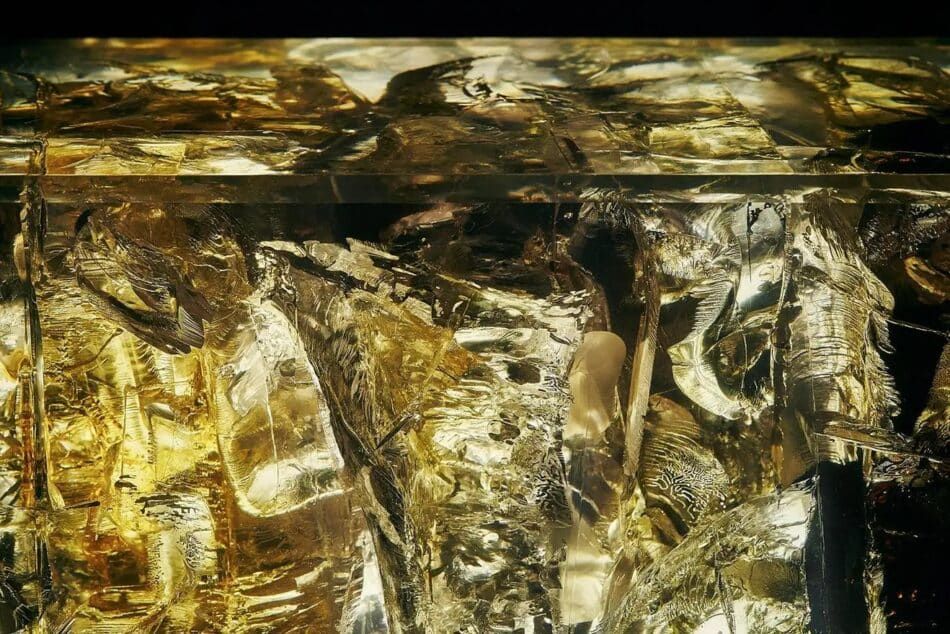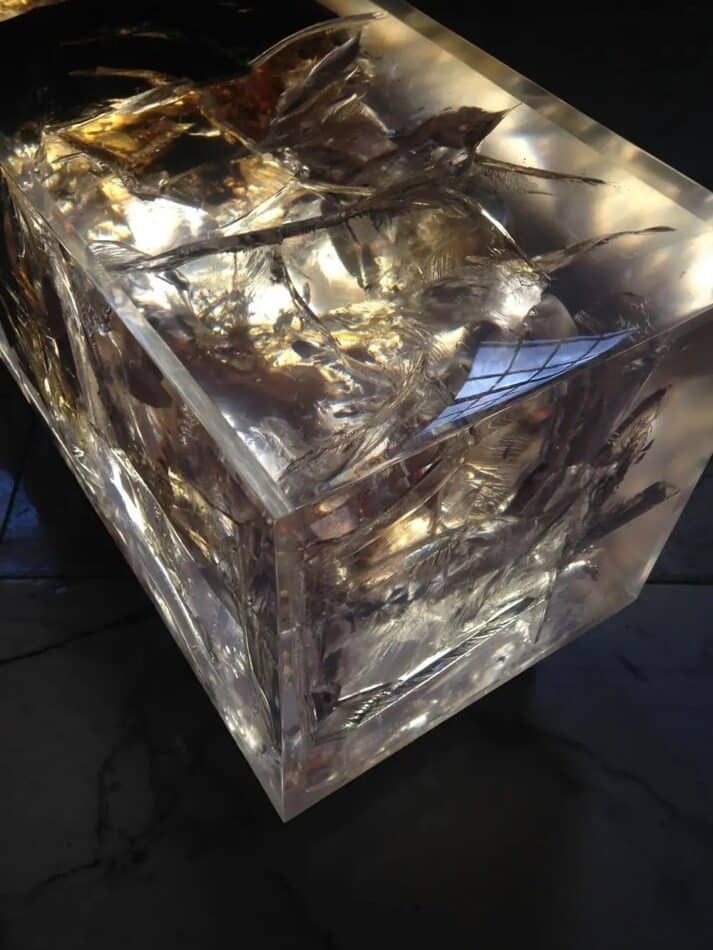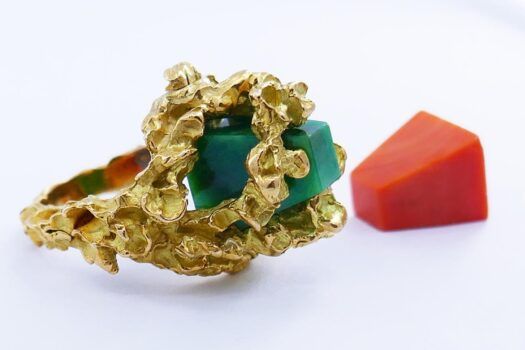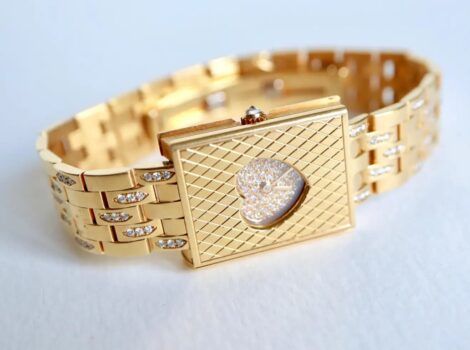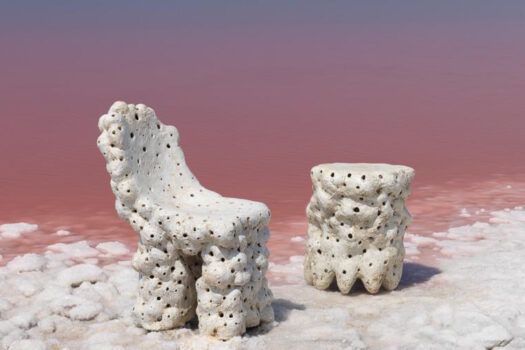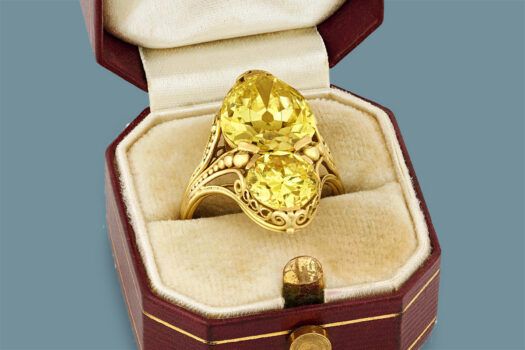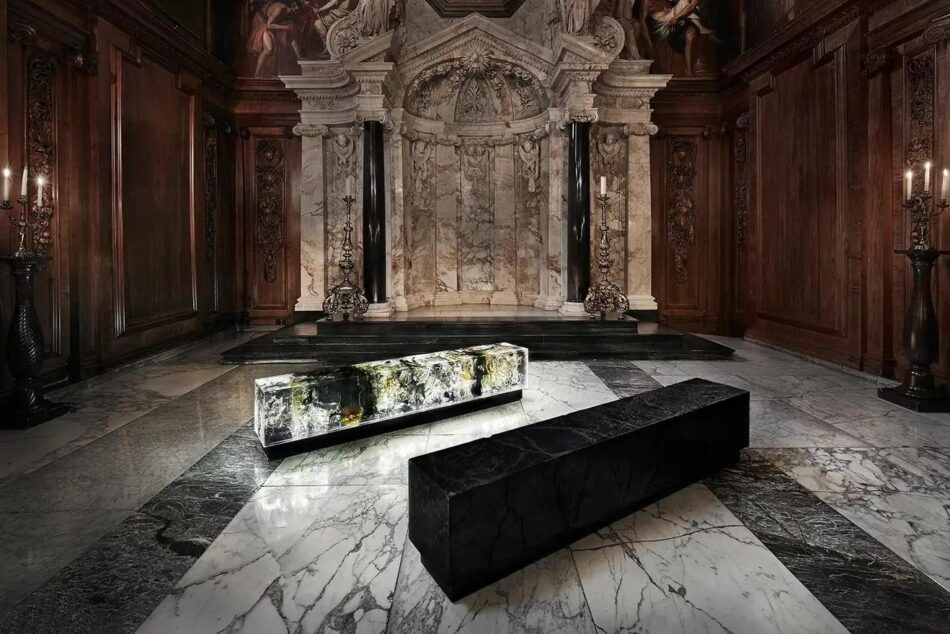
There’s a mystery to English artist Tom Price’s monumental benches that incites the imagination. On the one hand, they could be ancient relics, designed as a tribute to the celestial wonders of night and day. On the other, they look like the futuristic emblems of an advanced world, hewn from some kind of magical space rock.
Counterpart, which comprises two monolithic blocks — one crafted from coal, the other from resin with embedded LED lights — was originally created for a 2015 exhibition called “Make Yourself Comfortable,” centered on concepts of contemporary seating and held at Chatsworth House, a sprawling English estate.
Chatsworth, the historic abode of the Duke and Duchess of Devonshire, is considered one of the most beautiful and stately homes in the UK, known for its lavish art collection combining historic artifacts with modern-day treasures. Price conceived his benches for Chatsworth’s 17th-century chapel, home to a Baroque alabaster altarpiece and Damien Hirst’s gold sculpture Saint Bartholomew, Exquisite Pain.
For this commission, Price drew inspiration from the family’s rich history. “I learned about the [18th-century] coal mines owned by the family and was then introduced to the mineral collection started by the duchess Georgiana in the 19th century,” he says. “Suddenly everything clicked.”
The benches present a fascinating set of juxtapositions. “The title Counterpart refers both to the physical and aesthetic contrasts of the two materials — one dense and almost light absorbing, the other translucent and glowing — and also the dual role the pieces serve as sculpture, when viewed from afar, and as functional objects, when sat on,” notes the artist, who makes all his pieces by hand in his studio in Mallorca, Spain.
“The sculptures are also intended to honor the role of the humble plinth by questioning the perceived hierarchies between art, nature and function,” he says. “Throughout Chatsworth House, there are many sculptures that sit on beautiful polished blocks of natural stone. I was frequently much more blown away by the natural beauty of these plinths than by the art that sat on them. In a similar way, the blocks I made for the chapel can be considered plinths. They are functional objects. On their own in the space, they demand attention, but when someone sits on them, the person becomes the object of prime importance, and the blocks assume a secondary, supporting role.”
Price has described his practice as “working in collaboration with materials,” and Counterpart is a true testament to his investigative approach. In fact, the processes he explored in this piece sound positively alchemical.
“The coal bench is made by mixing ground anthracite coal with a binder and then pasting it into a mold in the shape of the bench,” he explains. “This forms a hollow shell, which is then reinforced with acrylicized plaster and a timber armature. When it is removed from the mold, there is a certain amount of finishing and retouching that happens. The coal is sanded and then sealed with natural wood oils. The finished surface is surprisingly smooth and tactile. People often worry that, being coal, it will leave black marks on clothing, but the surface is actually very inert, like stone.”
“As for the resin,” he continues, “I discovered that it was far more exciting when it was ‘misused’ and forced to crack internally.” Keen to explore a more colorful and luminous palette, Price added tar for a surprising marbled effect.
“Resin generates a lot of heat when it is curing, so I was curious to see if it would be enough to melt the tar, and if so, what would happen,” he recounts. “Amazingly, the two materials reacted incredibly well together. The heat generated by the exothermic reaction was just enough to liquify the tar, which then started to travel through the cracks that were opening up in the resin. In the process, it exposed a panoply of incredibly rich jade and turquoise hues in the tar that are completely hidden when looking at the raw material. It was one of those exciting eureka moments.”
According to Sonia Rameau of Parisian gallery Artistics, which is offering Counterpart on 1stDibs, Price’s genius lies in his ability to create works with a compelling presence. “You can see Tom’s pieces every day, and each time, you’ll discover new details,” she marvels. “They preserve their mystery, their beauty and their power to fascinate.”
